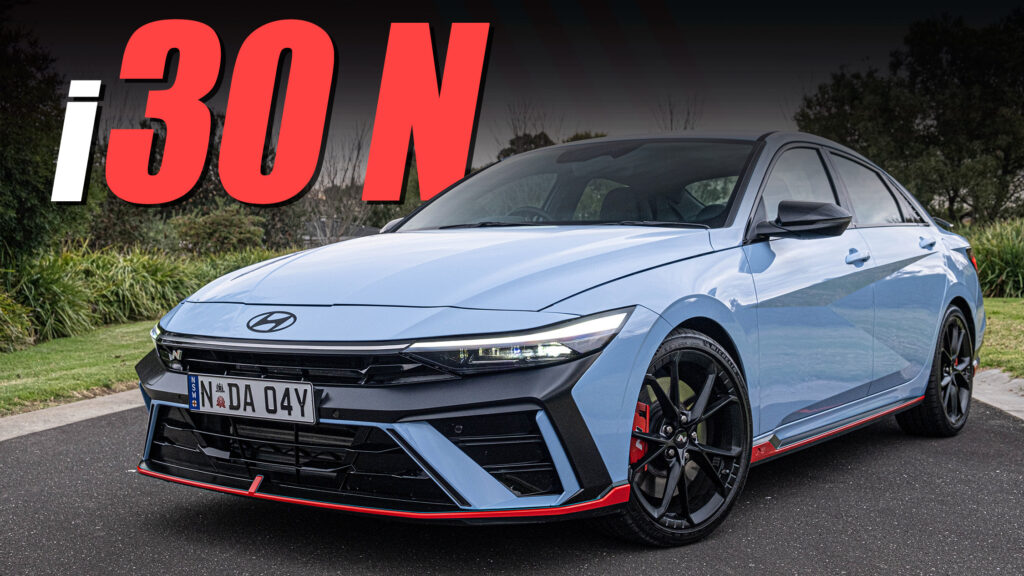I’ve long considered the Hyundai i30 N Sedan – or Elantra N – as one of the best bang-for-your-buck performance cars on the market. Some people don’t like the looks, but it’s impossible to deny that it offers scintillating performance, all while costing significantly less than some of its rivals.
Having driven versions of the i30 N Sedan with both the available six-speed manual transmission and eight-speed dual-clutch on the road and the track, we have very few complaints. Nevertheless, Hyundai has gone out and updated the punchy sports sedan for the 2024 model year, tweaking its looks and promising some important performance gains.
Review: The Hyundai Ioniq 5 N Is A Ballistic Missile That Redefines EVs
Have these upgrades made the car even better, or have they upset what was almost the perfect package? Let’s find out.
Quick Facts
As this is only a mid-life facelift of what is already quite an up-to-date model, the upgrades aren’t groundbreaking, but some noteworthy improvements have been made. For example, the i30 N Sedan comes with the second generation of the N division’s electronic controlled suspension that’s been designed to improve comfort while also making the car even more dynamic.
Hyundai has also made improvements to the car’s steering components, altered the upper engine mounts, and fitted new polyurethane rear strut bushes.
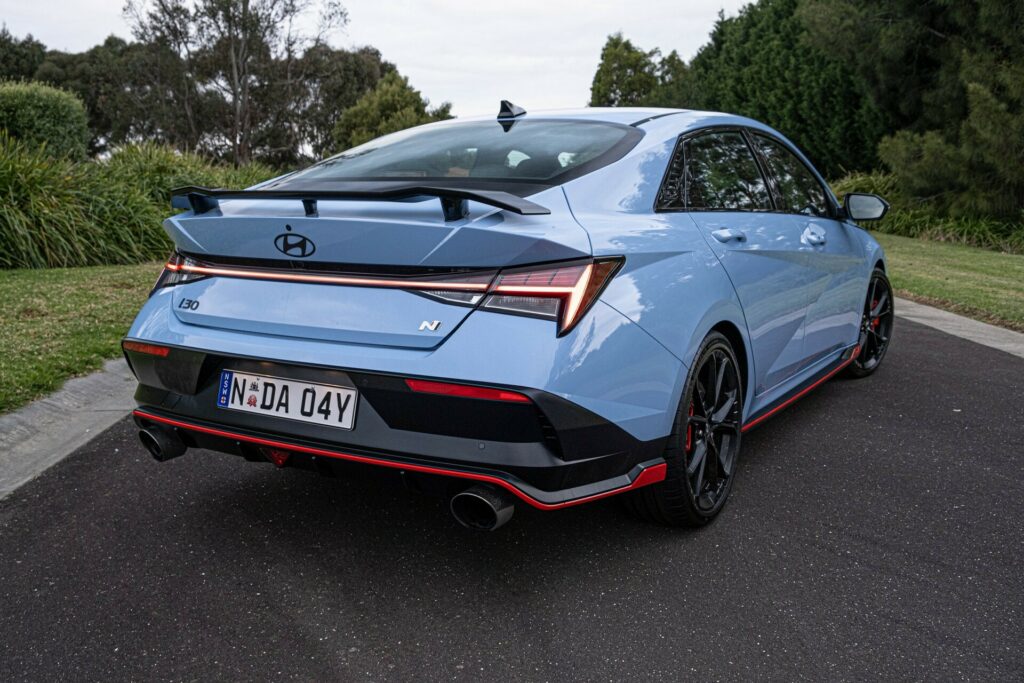
The more obvious changes have been made on a visual front. For example, the front fascia of the new car has been thoroughly revised and now includes slimmer headlights, new DRLs that include a light bar, and lots of new satin black trims. Hyundai’s flat new badges are also present.
Similar tweaks have been made to the rear with a new bumper that incorporates more black. I’ve always been rather fond of the i30 N Sedan’s looks, and think this facelift model looks better than ever. Adding to its appeal are 19-inch forged alloy wheels clad in Michelin Pilot Sport 4S tires.
Photo Credits: Brad Anderson/CarScoops
The interior
Few changes have been made to the interior of the car – not that it needed any. A 10.25-inch infotainment system is standard equipment and offers plenty of scope for customization depending on the driving mode. Accompanying this screen is a 10.25-inch infotainment display that includes Apple CarPlay and Android Auto. Unfortunately, neither of these systems works wirelessly, meaning owners will need to keep a USB-A cable handy.
The fit and finish of the cabin is good, although some of the material choices feel a little bit cheap compared to some other sedans of this size, like the Mazda3. In Australia, all i30 N Sedan models come equipped with the same sporty black leather seats complete with embossed N logos and blue contrast stitching and piping.
Driven: 2022 Hyundai i30 Sedan N Pushes Performance To New Heights
These seats offer 10 ways of electric adjustment, including lumbar support. The seating position is excellent as the seats can be adjusted nice and low. However, taller drivers will find headroom to be limited, even if the seats are adjusted to their lowest setting. This isn’t the end of the world but could be annoying if you’re wearing a helmet while thrashing the Hyundai at a track day. The lighter and more focused bucket seats of the i30 N hot hatch are not available, which is a shame.
Other highlights of the cabin include a solid eight-speed Bose audio system, dual-zone climate control, a wireless charging pad, alloy sport pedals, and heated front seats with a heated steering wheel.
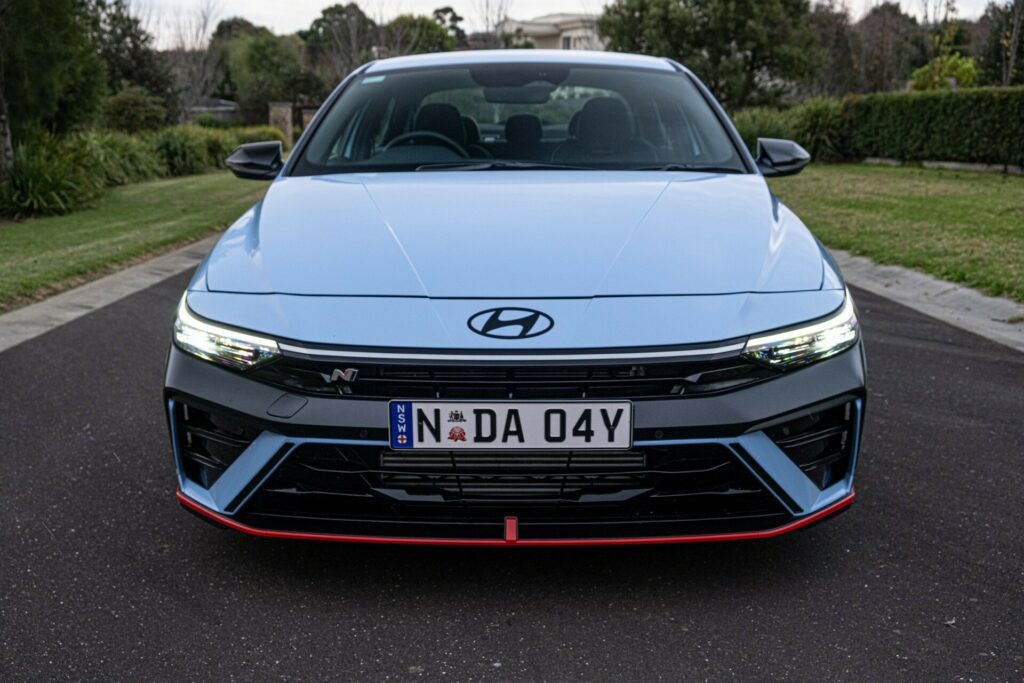
All models sold in Australia come in the same configuration. The only optional extra is a AU$2,100 ($1,400) sliding and tilting sunroof.
The second row offers plenty of space for adult passengers, while the expansive trunk can swallow up 464 liters (16 cubic-feet) worth of cargo. There’s also air vents for those in the rear, two USB-C ports, and seats almost just as comfortable as those up front.
As has always been the case, the new i30 Sedan N feels most special when out on the open road. It continues to pack an almighty punch and is huge fun to drive.
Photo Credits: Brad Anderson/CarScoops
A Korean firecracker, but not all is the same
Found beneath the shapely and aggressive hood is a 2.0-liter turbocharged four-cylinder producing 206 kW (276 hp) between 5,500 rpm and 6,000 rpm, alongside 392 Nm (289 lb-ft) of twisting force from 2,100 to 4,700 rpm. While these figures lag behind pricier rivals like the Honda Civic Type R and Toyota GR Corolla, they’re more than adequate for a car in this class.
This engine can be an absolute firecracker when you want it to be, or it can be as tame as a pet cat. When driven with the powertrain switched into its Normal mode, the 2.0-liter is quiet, refined, and smooth across the entire rev range, all while having plenty of pep on tap.
Switch into the smattering of more aggressive driving modes, and the four-cylinder roars into life. However, it’s not quite as punchy as we remember. There’s an explanation for this.
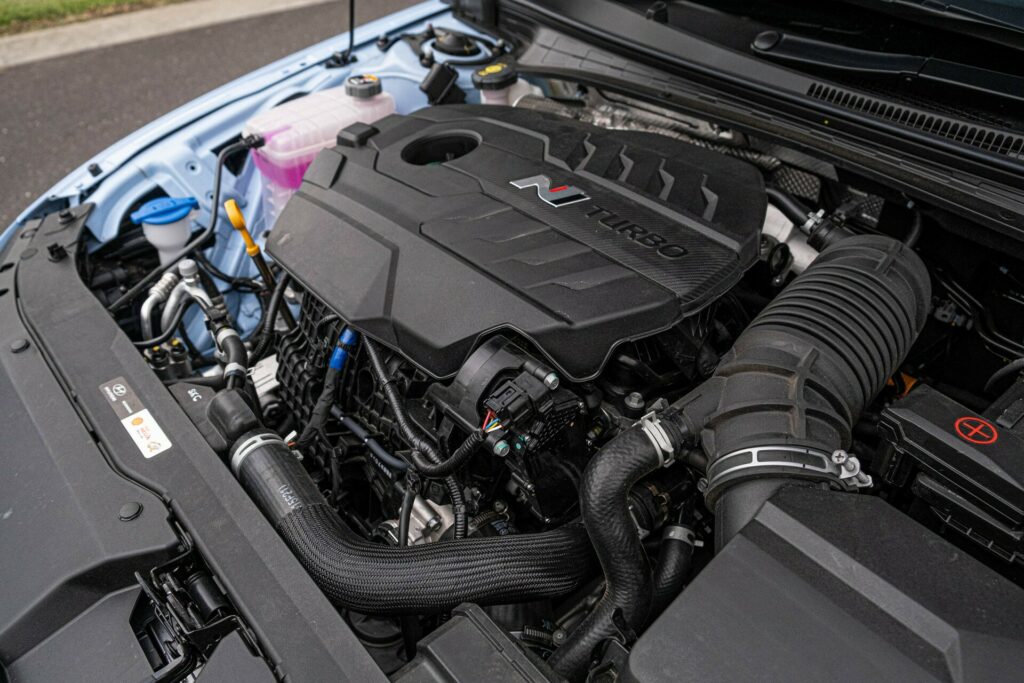
A couple of years ago, Hyundai introduced an ‘Octane Learning Mode’ on the i30 N Sedan and Elantra N. You won’t find any mention of this system in Hyundai’s marketing materials for the sedan, but enabling it transforms the car from one packing a decent punch to one that feels like a caged tiger let loose.
The purpose of the system is to determine what octane fuel it’s been filled with and to tweak the tune accordingly. To enable it, drivers have to drive in 8th gear between 109-159 km/h (68 mph – 99 mph) for 5 minutes or more. Alternatively, you can drive for 5 minutes or more in 4th of 5th gear at 40-70% throttle between 40-120 km/h (25 mph – 75 mph).
With Octane Learning Mode turned on, the average boost pressure of the N increases from 14 psi to 17 psi. That latter figure matches the standard boost pressure of the i30 N hatch, which we don’t believe has this mode. A boost of 3psi may not seem that significant but it makes the car pull much harder.
However, enabling the system is a pain and annoyingly, it resets every time you fuel up. This has forced many owners to turn to the aftermarket to have their cars tuned so they can always run at 17psi, without having to turn the system on.
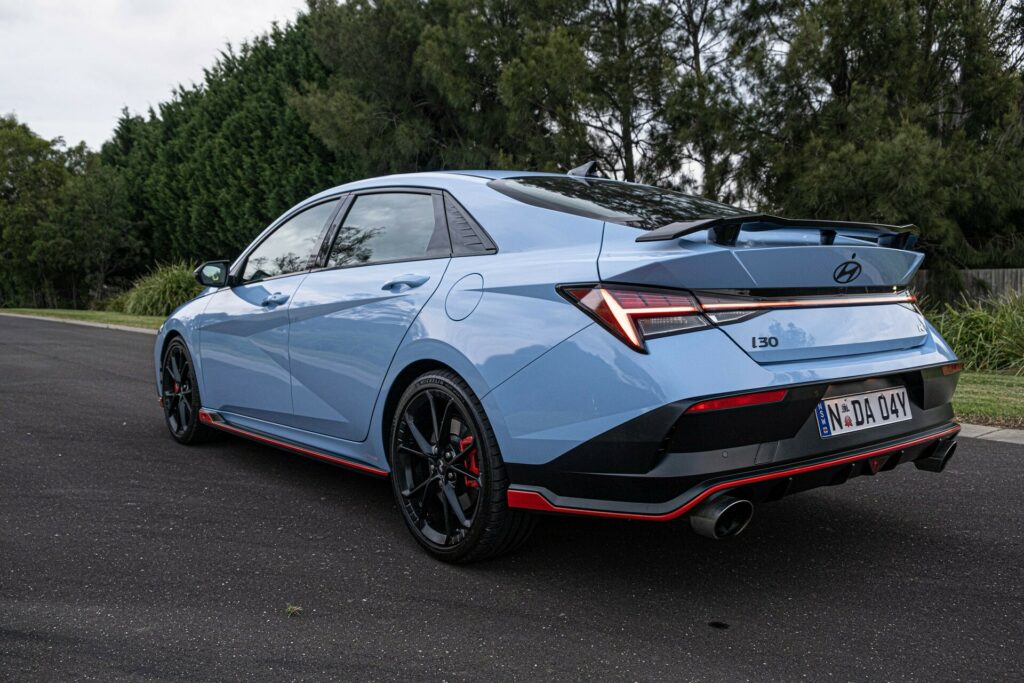
Corner rascal
However, it’s not the straight-line performance of the car that impresses most. Instead, it’s the way it handles.
Like all N products, the i30 N Sedan has been designed as a ‘corner rascal,’ as Hyundai calls it. As mentioned, various chassis and suspension modifications have been made to the facelifted model. The ride felt slightly more refined than the pre-facelift model we most recently drove, although most drivers would need to drive them back-to-back to notice any changes.
Traction provided by the Michelin tires is tremendous. Hustle the sedan into a corner and with a light touch of the throttle, the e-LSD will pivot you into the apex and provide extraordinary levels of traction once the accelerator is pinned on the exit. Along a tight and twisty road, this thing will keep up with far more expensive cars, even if they benefit from all-wheel drive and trick diffs both at the front and rear. It’s absolutely ferocious.
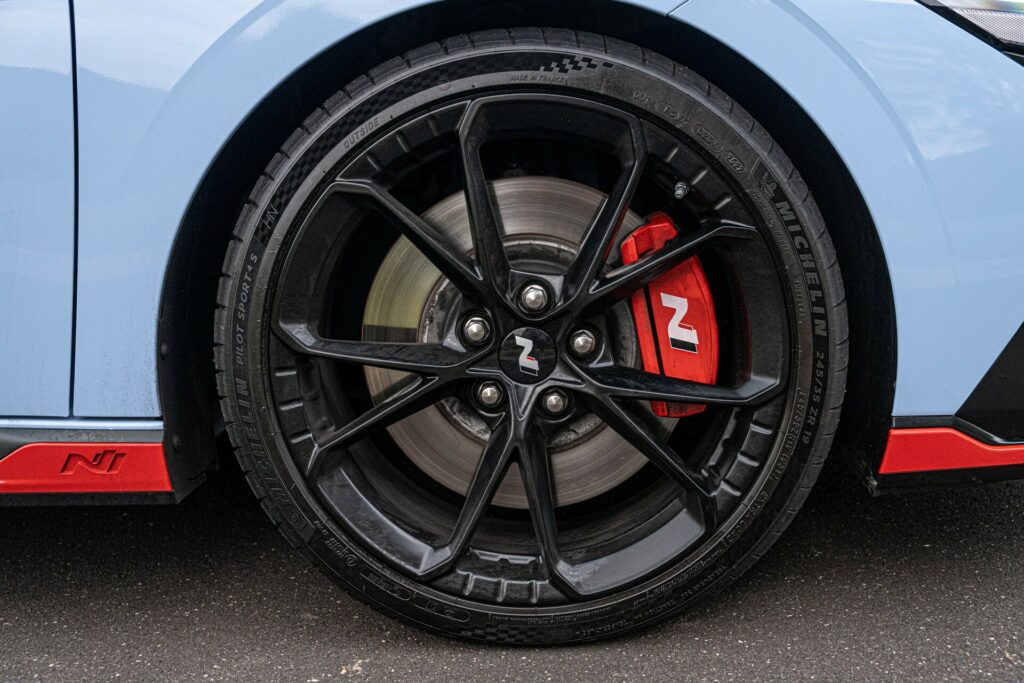
Tipping the scales at 1,539 kg (3,392 lbs) with the DCT and 1,499 kg (3,304 lbs) with the six-speed manual, the i30 Sedan N isn’t exactly a featherweight, and its mass can be felt, particularly during long sweeping corners. The added length over the hatch also slightly alters the dynamics as through every corner, there’s a sense of some extra weight over your shoulders that’s not apparent on the hatch. The rear also feels a little more prone to stepping out than the hatch.
The eight-speed fitted to our test car was superb as Hyundai has managed to develop a dual-clutch that’s smooth and refined at low speeds while snapping through the gears quickly when you get on it. The familiar NGS or N Grin Shift mode has been retained for the 2024 model and adds a little more power while also kicking you in the back with every gear change.
This mode works for 20 seconds at a time and is perfect for highway overtakes or as a little party trick to show your friends. To unleash the full potential of NGS, we found it best to have Octane Learning Mode enabled, as it added even more character to every gear change.
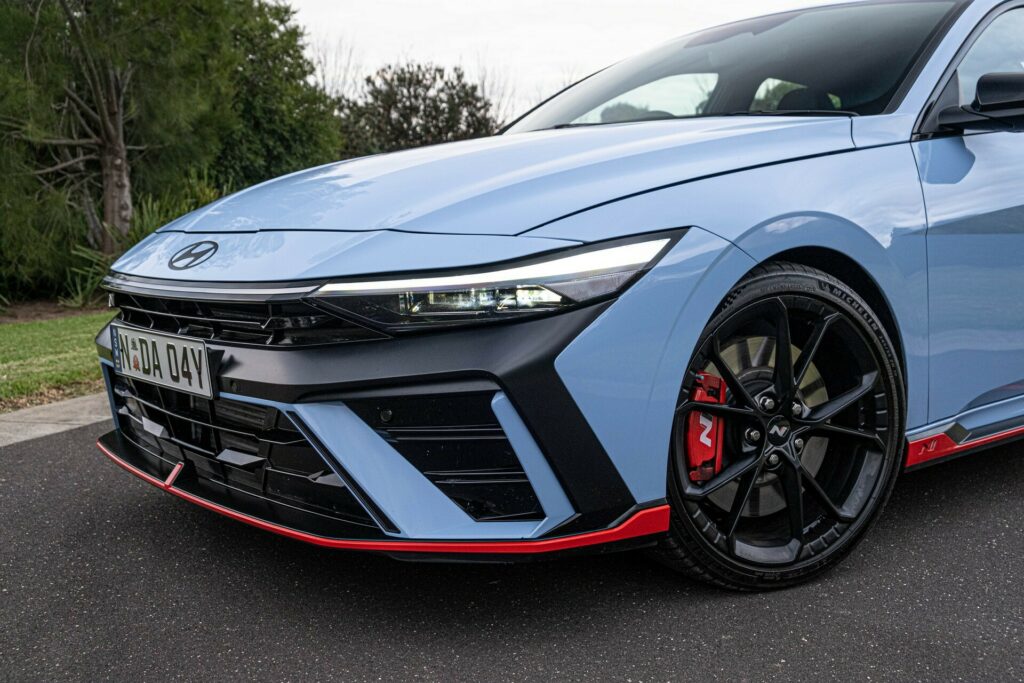
All Hyundai N models offer a dizzying array of customization options, and this model is no different. You can tweak settings for the engine, suspension, steering, e-LSD, exhaust, and more, fine-tuning the driving experience to your personal preference. We liked having most systems switched into their most aggressive modes, except for the steering that gets too heavy in Sport and the suspension that’s best left in Normal, unless driving on a racetrack.
Verdict
Priced from AU$56,782 ($37,855), the price of the i30 N Sedan has increased slightly over the past couple of years and yet, it still remains superb value for money. Although the GR Corolla and Civic Type R offer more performance, we’d find it hard to justify spending the extra AU$10,000 – AU$15,000 ($6,666 – $10,000) that those cars demand over the Hyundai. With the N division increasing its focus on EVs, cars like this might not be around much longer. Get one now before they’re gone.



